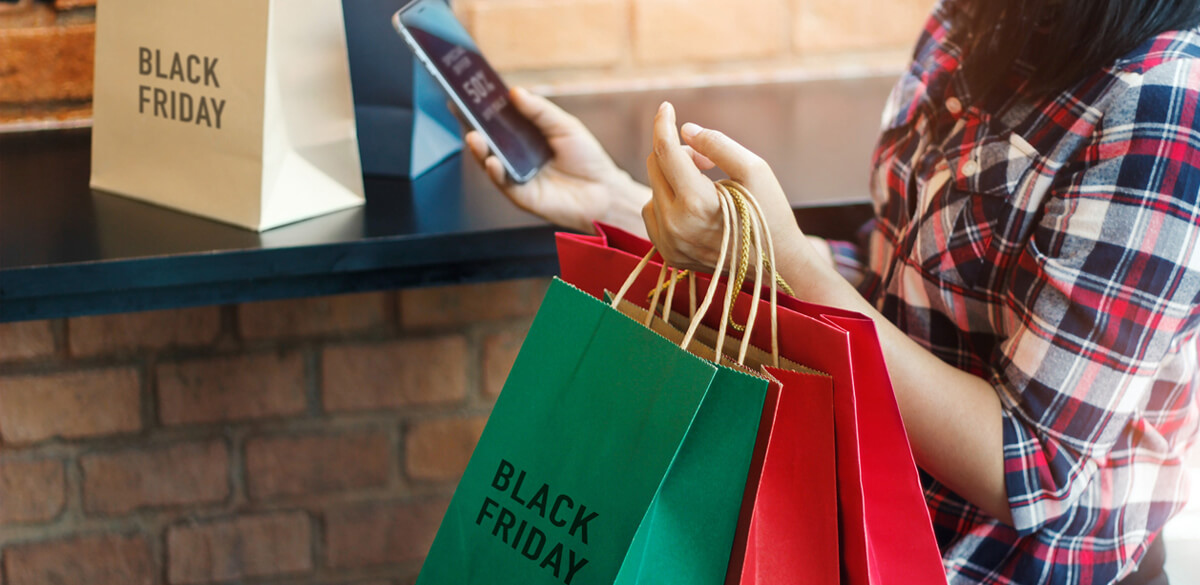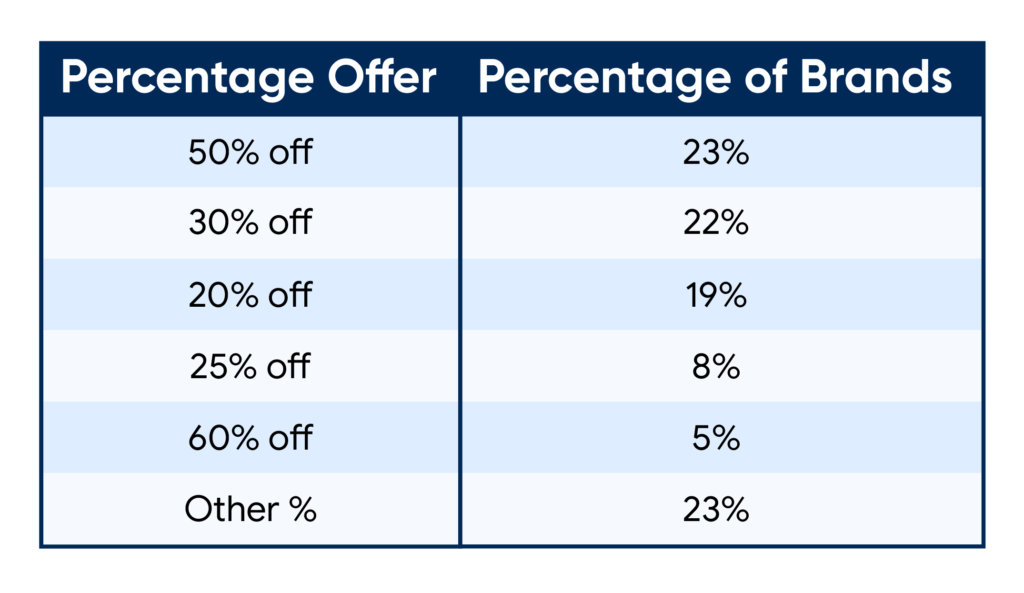Value of spending in the UK over Black Friday has steadily grown year-on-year (apart from 2020’s lockdown) from £8.29 billion in 2018 to £9.42 billion in 2021 according to Statista. Will this trend continue this year?
With inflation at its highest rate for 40 years, the energy crisis to fully bite this winter and food costs rising monthly, consumer’s wallets have never been more stretched. Shoppers will be looking for more value, carefully considering options and making some cutbacks.
For a successful peak period in 2022 brands need to personalise, segment and offer an exceptional customer experience to entice customers to buy.
We’ve analysed more than 180+ leading retail brands to uncover trends in the sending patterns, length of the Black Friday sales and whether brands opted for price or percentage discount.
How long does Black Friday last?
Black Friday has grown from a single day event to now a month-long affair with what some term as “Black November”.
In 2021 the first Black Friday campaign to hit our inbox was GiffGaff landing on the 28th October promoting its early access deals to new phones. The last Black Friday campaign we saw was on 13th December from Go Outdoors.
Black Friday deals ran for nearly 50 days last year compared with 38 back in 2019.
⭕ giffgaff – 28th October
⭕ Studio – 2nd November
⭕ HP Online – 3rd November
⭕ adidas – 3rd November
⭕ SportPursuit – 4th November
⭕ Amazon – 8th November
⭕ Argos – 8th November
⭕ Smyth Toys Superstores – 9th November
Make sure you read our article on how to capture new customers and preference of your existing customers ahead of Black Friday to capitalise on the ‘Black November’ trend.

Black Friday campaigns ramp up significantly the week before
We saw more brands than ever run early access or launch their Black Friday events early in November. Though email volume really began to increase between a week before the Black Friday week began.
Be sure to watch our deliverability experts how-to guide to building your Black Friday sending strategy later in this series to learn about the types of messaging you can send to different customer groups throughout the Black Friday period.
On the day itself RedEye saw the highest volumes of sends among our own clients between 9am-10am, moving away from sends sent at daybreak.

What was the average purchase value during Black Friday?
Our friends, and integration partner, Shopify identified many trends during 2021’s Black Friday including an increase in average basket spend to £63.19 – up from £55.15 in 2020.
The peak sales hour on Black Friday was 10am-11am, customers making acting on those emails sent an hour before.
London, Glasgow, and Manchester were the top 3 selling cities and Apparel & Accessories were the top product category. Health and Beauty, Home and Garden made up the top 3.
Black Friday and Cyber Monday sales were up over 20% on the previous year as the high street bounced back from lockdown that affected in-store sales according to CEEK.
UK banks also reported that the number of payments were up over 25% compared to last year.
71% of Black Friday and Cyber Monday sales were made on mobile devices compared to 29% on desktop according to Shopify.
What was the average length of a Black Friday sale?
Though we observed an increase in the number of brands starting their Black Friday events in early November it is evident from our research that the majority brands still opted to run for 10-12 days.
Starting from the week before Black Friday, this has slowly crept forward from previous years analysis where brands previously would run offers during the Black Friday Week.

Did brands opt for percentage or price discounts?
Overwhelmingly within email subject lines we saw brands opt for percentage discount offers over price discounts, with a huge 86% of brands promoting percentage offers.
The most common discount percentages were 50%, 30% and 20% accounting for 64% of the offers being promoted.

Tip: We’d recommend before the Black Friday starts, A/B testing whether your customer base are more receptive to price or percentage discounts and what will work best to pull in your audience.

What was consumer interest levels like in 2021?
Statista research shows that interest in Black Friday in the UK continues to grow with 24% interested and definitely buying and 35% interested and may buy – up from 16% in 2019.
In 2021, the UK accounted for over 10% of all global Black Friday searches online.
According to Toluna, 56% of consumers made purchases, most of which were online.
⭕ 69% said they bought a gift for themselves, representing a 13% increase from last year
⭕ 60% bought gifts for family members
⭕ 23% bought gifts for partners
⭕ 20% bought for friends
Tip: With Black Friday and peak period sales it’s important to re-evaluate your traditional segmentation, as highlighted above, people’s shopping habits change dramatically as they purchase for others as well as themselves. Traditional gender based segmentation should be deprioritised for behavioural based activity.
The big winners last year were Amazon – accounted for 64% of Black Friday shopping. Other popular online retailers in 2021 were Argos (28%), and eBay (19%).





